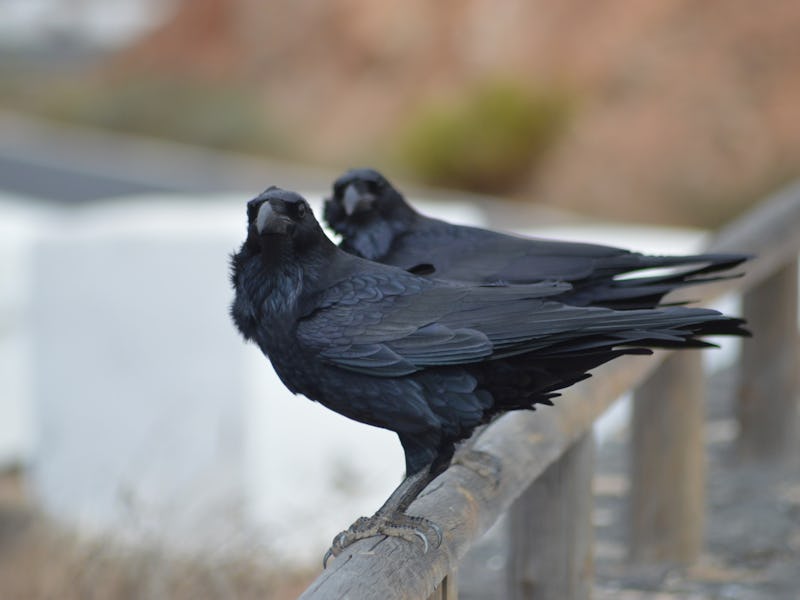Why Do Crows Gather Around Their Dead?
Crows once again prove their sharp wits.

Crows are basically Einsteins of the sky. They recognize faces for years. They’re master problem solvers. Hell, they even give kids gifts. That’s part of why it’s so unnerving to see a murder of crows, well, crowing near other dead crows.
Is it a funeral where everyone’s already dressed for the occasion? Are they standing vigil for their late compatriots? Do crows mourn their dead the same way we do?
According to new research led by Kaeli Swift, there’s a reason crows gather like they do near their fallen comrades. Swift, a Ph.D. student in biology at the University of Washington, conducted a two-year experiment where she observed the behavior of live crows in relation to the sight of dead ones.
Swift set up the experiment by getting groups of wild American crows (Corvus brachyrhynchos) used to accepting snacks from various pre-identified breeding and feeding locations around Washington.
She then commissioned a crew of volunteers to don latex masks and station themselves near the food for 30 minutes either holding a dead crow, standing near a dead red-tailed hawk, standing near a hawk with a dead crow, or loitering without any animal props. At the introduction of the taxidermy animals, the crows in the area would mob together and “scold” the offending masked volunteers, warning other crows in the area about the potential danger.
The crows ended up making the most fuss about the hawk-dead crow combination, since red-tailed hawks are natural predators of crows. The volunteers without anything in their hands acted as a control group and elicited no response from the birds.
Later during Swift’s study, she had the volunteers return to the same areas for several weeks, this time empty-handed. Despite the lack of visual threats (like dead birds), the crows would recognize and scold the volunteers they had associated with the dead crows from earlier in the experiment. Crows have been known to remember faces for extended periods of time, according to another series of studies done at the University of Washington, headed by biologist John Marzluff.
Swift’s findings ultimately determined that the crows that saw another dead member of their species would gather to warn others about both the location and the perceived threats (like humans). The crows would then remember that information and remain leery of both the place and the predators for an extended period of time.
So maybe crows aren’t sentimental about their dead, but it certainly looks like they’re smart about it.
And if you’re still in doubt about how lucid crows can be, here are a few examples of these sharp corvids demonstrating their intelligence.
Just take a look at this group of birds that figured out an ingenious way to crack walnuts.
And an intrepid crow that saw a bottle of water and a group of humans to help it crack the seal.
Finally, a New Caledonian crow bringing one of Aesop’s Fables to life.